
Electronic english version since 2022 |
The newspaper was founded in November 1957
| |
|
Number 30 (4678) |
The team and its work
In place of the old cyclotrons
Work on the development of the accelerator complex DC-140 is underway at the Flerov Laboratory of Nuclear Reactions.
The complex is developed to solve applied problems: research in solid state physics and modification of the surface of materials, production of track membranes and testing of the electronic component base and others.
The installation of the main magnet of the cyclotron has recently been completed. It is assumed that the accelerator will be put into operation in one and a half to two years. Head of the Scientific and Technological Department of Accelerators of the FLNR Chief Engineer Service of JINR Vasily Semin tells about the work and his colleagues that participate in this work.
"The first FLNR accelerator designed for applied work the IC-100 cyclotron was launched back in 1983. It has been modernized several times and is still in service. This facility allows to obtain beams of accelerated ions with an energy of 1.12 MeV per nucleon. The main work includes materials science, surface modification under the action of a stream of accelerated ions, changing the macrocharacteristics of materials, such as, increasing the critical current in high-temperature superconductors. The second very large area is the production of track membranes. Georgy Nikolaevich Flerov discovered this topic at FLNR. Today, this technology is widely used in the world, in some way following us. In the footsteps of this accelerator, several more machines were developed, among them the DC-110 cyclotron that was built as a part of a project called "Beta" and was aimed precisely at producing plasmapheresis filters based on track membranes. This project was located in the Special Economic Zone, but has been closed for quite some time. We installed the facility there and launched it and our employees gained considerable experience in the process of its development.
The interests of experimenters in the field of applied research expand. New problems require high energies of accelerated beams. Today, this work is carried out at FLNR on our two large research machines U-400 and U-400M and take more than three thousand hours of working time per year. This time could be used for fundamental research. Moreover, the U-400M cyclotron is currently in the process of modernization and when it is launched, the modernization of the U-400 cyclotron will be started.
Therefore, in 2018, it was decided to develop a special complex for applied tasks. In 2019, this solution was transferred to the project. It was named DC-140. It was decided to place the new complex in the current building on the site of the decommissioned U-200 cyclotron. This is a very old machine, born in 1963... The corresponding project was approved and its implementation started.
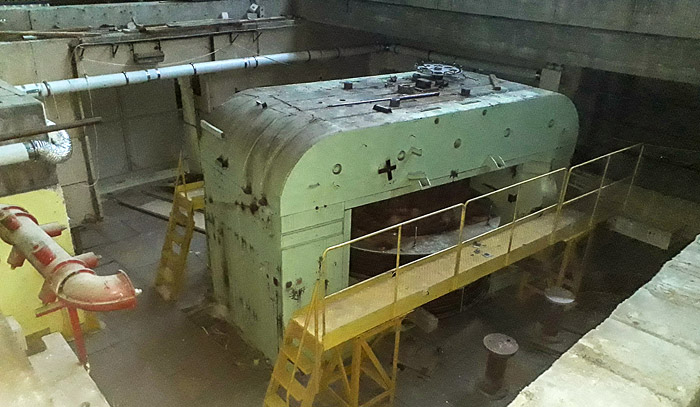
Photo 1. U-200 cyclotron magnet, beginning of dismantling
Two years ago, dismantling work started, the U-200 equipment was dismantled, in photo 1 we see the magnet of the U-200 cyclotron before the start of dismantling, the ceiling of the cyclotron hall has already been dismantled ... Later, the concrete base was completely dismantled, because the structures of the new premises should not be connected with the current building and are located on their own foundation. Only the foundation on which the old machine stood remained, the supports of the new magnet are placed on it (photo 2) and construction work begins at this place. Afterwards, the floor, walls ... And gradually everything came to the point that we had already installed a magnet.
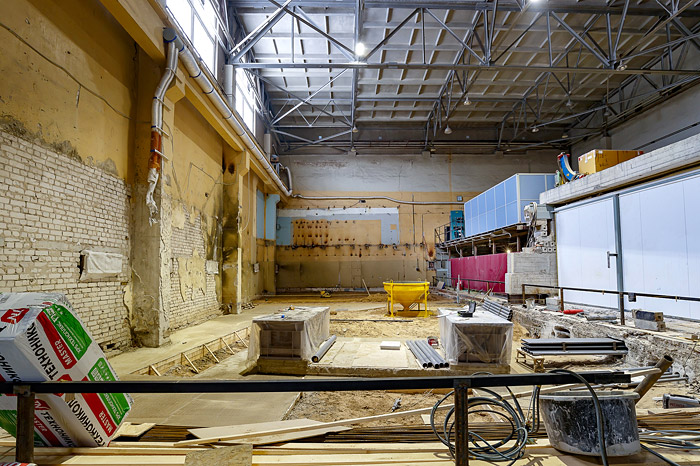
Photo 2. Construction site of DC-140, supports of the main magnet
In photo 3 you see the installation of a magnet in a room with unfinished walls. It was a necessity. The magnet has large parts and the complex provides for a closed concrete sarcophagus. Therefore, it was necessary to mount the magnet in the middle of the construction site. Today, the magnet has already been mounted and mothballed and the builders have started work on building the walls.
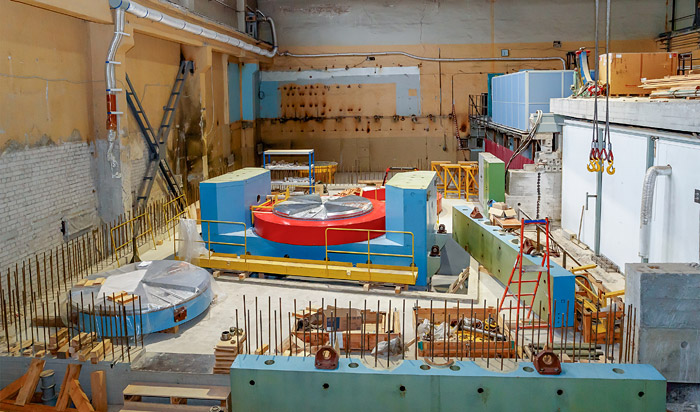
Photo 3. In the process of mounting the DC-140 magnet
Accordingly, here it would be necessary to turn to people? ..
- Any cyclotron begins with calculations of the main magnet. The Sector of Accelerator Physics is engaged in it in our country: Ivan Anatolievich Ivanenko and Nikolay Yurievich Kazarinov supervised the work. The staff of the Sector carried out calculations of magnetic fields, beam trajectories in new magnetic fields, components of accelerating systems, extraction systems and transportation channels. Further, the information is transferred to the designers and our design bureau with the head of Nikolay Fedorovich Osipov turns the idea into design documentation. After, comes the turn of production.
As always, the geography of manufacturers is wide: Bryansk, Belgorod, Moscow, Nizhny Novgorod, Fryazino, as well as our foreign partners from China, Serbia and Belarus. A lot of work fell to the share of our workshop. Our colleagues from the Laboratory of Neutron Physics also helped a lot.
They took over some of the production. Part of the products needed to be produced in a short time, as they were needed before the mounting of the magnet. Colleagues from FLNP made for us everything we needed to start the mounting and also participated in the installation and adjustment of parts on site.
After the preparations were made, it was the turn of the team of mounting. Here, the foreman was Alexander Nikolaevich Bykov, our experienced mechanic that is involved in the assembly of more than the first complex. I would also like to mention Nikolay Pavlovich Khrustov with his invaluable experience that today came in handy as well as possible. All the mechanics of our laboratory were involved in this voluminous work, it was necessary to transport large parts, prepare them for assembly and mount them. In addition, we were very pressed for time: this was due to the start of the construction of a new experimental building at FLNR and the components of the magnet were brought through the site allotted for this construction of a new building. And the mounting of the magnet delayed the start of construction work.
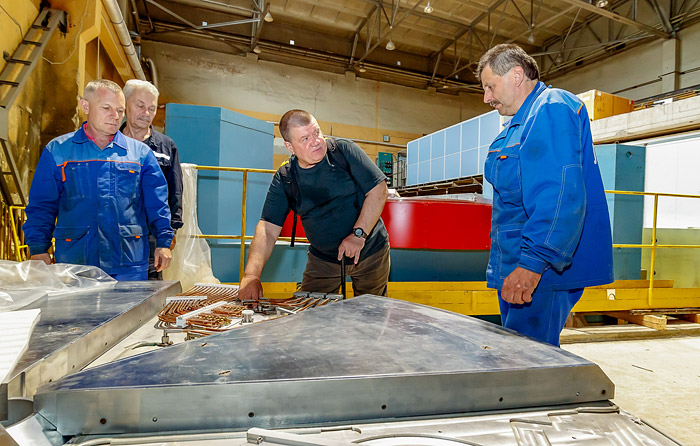
Photo 4. In the process of mounting the DC-140 magnet.
From left to right: A.V.Kulikov, N.P.Khrustov, V.B.Galinsky, A.N.Bykov
The peculiarity of the project is positioning inside the current building. We need to develop new components of physical protection. We build a building within a building. There were many unforeseen problems and hidden work. There is still a long way to go through the construction part. Now, after the completion of mounting of the magnet, construction has resumed: reinforcement is knitted, afterwards, the pouring of monolithic walls around the accelerator and the formation of the cyclotron hall will begin.
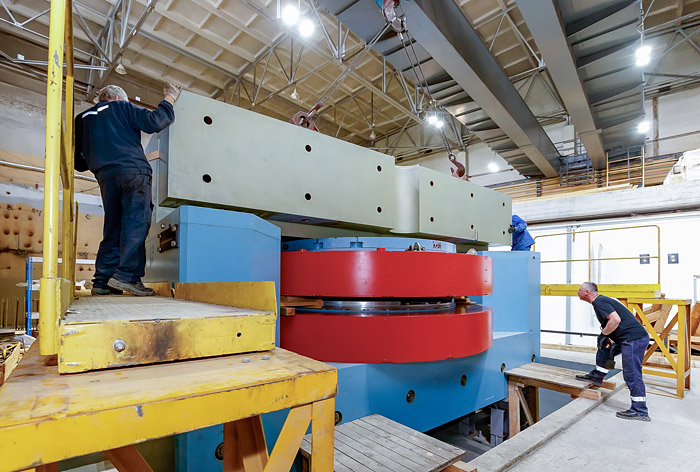
Photo 5. Mounting of the last components of the DC-140 magnet is carried out by N.P.Khrustov, A.N.Bykov, A.A.Gubanov
Does the old building remain the same?
- Yes, moreover, the project is made in such a way as to untie the old and new walls as much as possible, because they rest on different foundations.
Do you have young people at this facility? And how do they work with the team?
- If we talk about young people under the age of 35, then traditionally, any project consists of groups, each of which is engaged in its own area. Some - in the magnet of the main cyclotron, others - in the RF power supply systems, the third - in the beam transport channels, the extraction systems, respectively, the engineering systems… In this project, young people are involved in almost every topic, in some topics young employees play a leading role. Participating in the development and commissioning of the DC-110 and DC-280 cyclotrons, quite a lot of young people gained good experience. For example, in the group that deals with the RF accelerating system, the leading role is played by our young employee Kirill Verlamov that was involved in calculations and conceptual development and today is busy with commissioning and measurements of finished products.
Five years ago, a group of graduates of Tomsk Polytechnic University came to us and they strengthened the Sector of Accelerator Physics. There they are engaged in the calculation of magnetic fields, tracing of accelerated beams, the calculation of the configuration of the high-frequency field and thermal loads in the accelerating system. Here, we can note Vladislav Lisov and Alexey Zabanov. Our young employees are very intensively involved in the work.
But of course, the experience and knowledge of the older generation serve as a worthy example for young people to follow. However, topics remain where the leading roles belong to the older generation and of course, we have not yet crossed the line, beyond which the concepts are proposed and promoted by the young. But today, in addition to this project, we have two more ones, on which I think, we will gain enough experience that we will pass this milestone and also start generating ideas ...
Vasily, how did you choose your specialty and were there people in your biography whom you consider your teachers?
- A good question! I came to FLNR more than ten years ago, like most young engineers, without any high ambitions and desire for career growth. I was the shift supervisor of the accelerator facility, that is, the engineer that is responsible for the operation. But for some time, I worked my way up to Head of the department. Of course, there are many such people that have become my teachers and continue to be. First of all, this is the Chief Engineer of the Laboratory Igor Vladimirovich Kalagin, he was Head of the Accelerator department before me and headed the work on the launch of the DC-280. They are the current Chief Engineer of JINR Boris Nikolaevich Gikal and of course, Georgy Gerasimovich Gulbekyan that comes up with the concepts of everything in the world and has diverse thinking. It was from him that I learned to look for a solution to any problem from different angles and not go the most obvious way. And of course, these are all the people with whom I dealt more with applied problems, especially Viktor Ivanovich Mironov, in whose hands the new facility turns from iron into a unique working machine.
The environment in our Laboratory is quite favorable and although, due to the large amount of work, employees often work with overload, everyone understands well the interest of the Laboratory in the implementation of projects and they themselves want to improve professionally on these projects. Unfortunately, the perennial problem remains that few young professionals, immersed in their tasks, strive to get degrees, but today, a whole group of young scientists are aimed at defending Ph.D. theses.
What other problems have to be overcome?
- Unfortunately, the weakening of international cooperation, contacts with foreign colleagues, the closure of some international scientific conferences, these all factors have become a problem for us. We are not allowed to participate directly in them, yet, on the other hand, Directorates of the Institute and the Laboratory show concern for establishing new close contacts. For example, we have close cooperation with our Chinese colleagues from the Institute of Modern Physics in Lanzhou on ion sources. Our specialists have recently gone there to exchange experience with their Chinese colleagues that can confidently be called world leaders both in terms of the pace of development and the technologies used ... We have established strong ties and we develop, we are in a dialogue and so far, they also have something to learn from us.
The development of cooperation in all areas is underway. There is an expansion of contacts with Serbia - both scientific and technical: there are organizations that help in developing the nodes we need. And there have been common interests on small projects so far with colleagues from the Serbian LOLA Institute in the city of Vinca.
It is also pleasant that for the second year, young specialists, engineers from our Laboratory get support in the competition for regional grants for social mortgages as part of the state programme to support young scientists, specialists and teachers.
***
Our conversation ended with a short tour of the objects that were announced in the office of Head of the department. In the course - an exchange of short remarks with colleagues that met on our way. Visual explanations of where the components of the new accelerator complex will be positioned, where there will be premises for the production of polymer membranes, a station for irradiating electronic components and a station for work on radiation materials science. We looked at the mothballed magnet of the DC-140 cyclotron. Here is IC-100, that this year will be dismantled in order to carry out further construction. We looked into the premises where the ventilation system of the building will be positioned. Currently, the walls and ceilings are strengthened there and by October, it will be necessary to mount and launch the heating system ... Places are currently prepared for gas cleaning systems, water cooling and other systems of the new accelerator complex. Like in newsreel footage, the laboratory's iconic and well-deserved facilities flicker: for example, the U-400M… Looking inside, I remember Yury Tumanov that used to take pictures of the inner angles of the vacuum chambers of the FLNR accelerators with his camera. I am asking about tours...
- We understand and appreciate the interest in the Laboratory, in the Institute as a whole, but lately there have been too many excursions and it takes up experimental time that is worth its weight in gold.
There is a well-established mechanism in everything you do, - I said in farewell.
- We do our best - Vasily answers. - The staff has both enthusiasm and interest ...
Interviewed by Evgeny MOLCHANOV